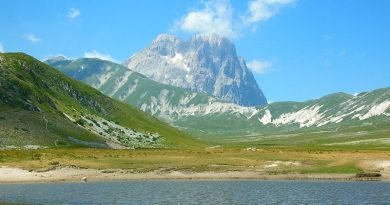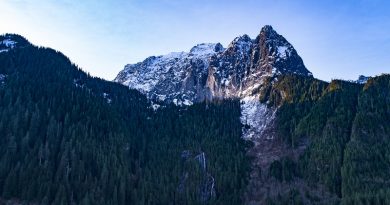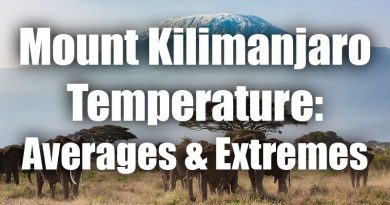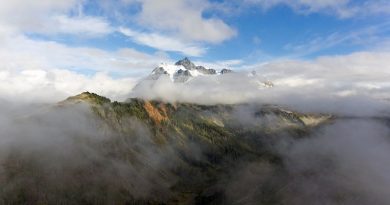Got Mount Kilimanjaro on your bucket list? If so, you’ll want to think seriously about your budget before you head off for the legendary mountain. As anyone who’s reached the summit will tell you, getting there isn’t easy—and it’s certainly not cheap. In reality, there are a number of budget considerations you’ll need to make to know whether climbing Mount Kilimanjaro is really right for you.
In this guide, we’ll go over how much you can expect to pay by taking a trip to the famed Tanzanian mountain. We’ll also analyze why it is that costs vary, see what it is you’re actually paying for, and go over some specifics that you’ll want to budget for before leaving.
Keep reading to find out how much a trip to Mount Kilimanjaro really costs and how to get the best value for your trip!

Cost Overview
Let’s start by providing some specifics to our title question: how much does it cost to climb Mount Kilimanjaro? Of course, the real answer is not a cost but rather a range of costs that you can expect to pay. Tour packages to the mountain are advertised for rates as low as $1,000 and as high as $4,000, with money of course required for airfare, medical care, and personal use during your trip. While this may not sound bad on the surface, it’s important to understand what costs make up these totals so that you can get the trip you deserve.
As we’ll explore in the next section, there are a number of reasons why costs vary, particularly in relation to the tour package you select. And in the context of climbing Mount Kilimanjaro, at least, saving money isn’t always recommended.
Why Do Costs Vary?
Mount Kilimanjaro has emerged as an international hotspot for adventure climbing. With seven unique trails that run up to the summit, the mountain boasts one of the best climbing experiences in the world—and certainly the best in Africa. This has led to the emergence of an aggressive tourist industry, with hundreds of tour climb operators taking root to do business on the mountain. With so much competition, it’s inevitable that prices on some tours have dropped.
While this may seem good on the surface, the truth of the matter is that cheaper trips to Kilimanjaro aren’t in your best interest. Here’s why: in order to offer you that low price (let’s say anything below $2,000), operators are in reality cutting expenses that are designed to make your trip more worthwhile. And it’s not just an issue of comfort. Many times what you can expect from these budget trips is a faster schedule (meaning you’ll be less likely to make it to the top), less experienced porters, fewer pieces of equipment, etc. Outside of the Kilimanjaro National Park fees, which operators cannot change, businesses are free to cut just about anything.
Knowing this, it’s important to take a look at what’s included in the cost of your trip. In the next section, we’ll explore in-depth some of the costs that make up a tour package—and the amenities you could be leaving out if you decide to embark on a budget trip.
What Is Included in Your Costs?
So what exactly is including in the Mount Kilimanjaro tour package costs? As you’ll see, there are a number of elements that operators take into consideration when deciding on the price of their packages.
Let’s take a look at them:
Staffing
Reputable and generally more expensive climb operators provide climbers with a quality staff of experienced porters and guides who are able to assist in both climbing up the mountain and back down. Even more importantly, these staff members are trained to know what to do in emergency situations should they occur on the mountain. Porters are responsible for maintaining traveler safety and helping climbers stay comfortable on the climb up (among other things).
What does this mean in relation to cost? Simply put, it means that you cannot expect the same level of care and expertise from more budget trips. This is made doubly true when considering that most porters on Kilimanjaro are freelancers who are paid by experience.
Food and Other Amenities
Here’s what you can expect while climbing Mount Kilimanjaro: brutal cold, intense inclines, and extremely high altitudes. Against this backdrop, you want to be sure that you’re well taken care of. More established climb operators, though pricier, will make sure that you have everything you need, including the right amount of fresh food and proper mess tents, kitchens, and other climbing equipment. If your goal is to reach the summit (and we’re assuming that it is), you want to be sure that you’ve got everything you need, or you could find yourself physically unable to make the climb.
More expensive trips also generally include trained chefs and staff who make sure that you are getting quality nutrition (don’t downplay the significance of this, as you will be climbing for about a week at extreme altitudes) that will keep you energetic and increase your chances of success. Going with a budget operator could mean your porter staff lacks this training—in some cases, this lack of training has correlated to poor hygiene and diarrhea.
Long story short? The quality of the food you eat, the care you get, the equipment that houses you, and more are all included in the price of your tour package. Cutting corners on any of this means that you are cutting corners on your wellbeing and making it significantly less likely that you reach the top.
Your Route on Kilimanjaro
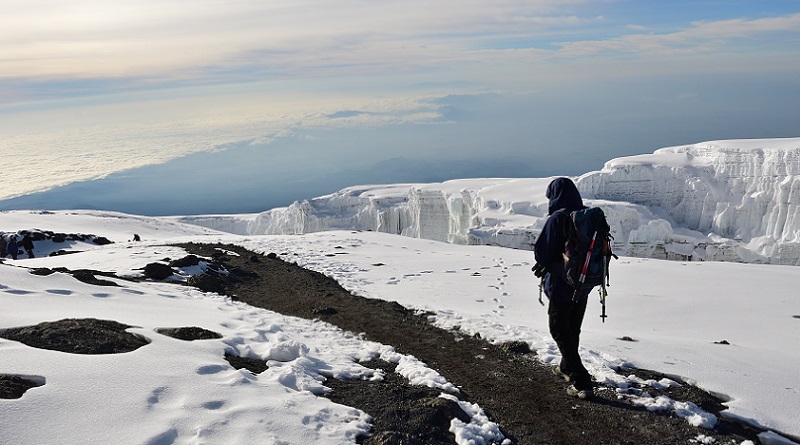
There are seven main trekking routes on Kilimanjaro, and each of them are priced differently. This is because some routes are longer than others, meaning they require more time (and thus more money). Routes such as the Northern Circuit, for instance, generally rank as the most expensive, which makes sense because the Northern Circuit is the longest route on the mountain.
This doesn’t mean, however, that you want to get a shorter trip simply to save on costs. Remember that your body needs time to adjust to high altitudes. Generally, trekking for anything less than six days could lead to extreme altitude sickness, which is why the number of climbers who make it to the summit on these shorter trips is under. 500. This means that, if you’re serious about succeeding with your trip, you’ll want to give yourself at least six days of climbing—no matter what route you are taking. If you have the time and money, extending your trek to eight days or above is a great way to be sure you can acclimate to the conditions on the mountain. Of course, however, this will likely cost you significantly more.
What to Budget For
Keeping all this information in mind, let’s turn to the specific Mount Kilimanjaro costs you’ll want to budget for when you plan your trip. Understanding what you’ll have to pay and (approximately) how much it will cost will be crucial to having a comfortable trip. Remember: getting to the summit of Mount
Kilimanjaro isn’t easy, so you don’t want to go without any creature comforts, no matter how minor you think they are.
So saying, let’s take an in-depth look at the items you should budget for when you plan your trip:
Flight Costs & Travel to Kilimanjaro
Outside of your tour package, you can expect the most significant Mount Kilimanjaro cost to come in the form of airfare. In general, you can expect an international flight that has at least two connections. Most climbers find it easiest to fly into Addis Ababa or Nairobi (the capital of Tanzania). From there, you’ll connect to Kilimanjaro International Airport, where you can depart for the mountain.
The only way to catch a direct flight to the mountain is to leave from Amsterdam, which services a daily flight to Kilimanjaro International Airport. No matter which route you take, it’s likely that you’ll have to spend over $1,000 just in airfare. For this reason, it’s important to budget appropriately. To be on the safe side, expect to spend between $1,300 and $1,500 in airfare outside of any costs that you will pay in terms of your tour package or any of the other costs mentioned in this list.
Tanzanian Visa
Tanzanian visas are widely needed to gain entry into the country. Only some citizens from Commonwealth nations are able to get into Tanzania without a visa. There are two main ways you can get your visa: either with the Tanzanian embassy before arrival or at Kilimanjaro International Airport when you arrive. The choice is yours, but keep in mind you can save significant amounts of time by purchasing your visa beforehand. Currently, Tanzanian visa fees for those who purchase on arrival are as follows:
US Citizens (one year, multiple entry): $100
Non-US Citizens (six months, single entry): $50
Non-US Citizens (six months, double entry): $100
Keep in mind that these visa fees must be paid in cash on arrival, though you can likely save money if you’re not a US citizen and have no plans on coming back to Tanzania. You need to show proof of vaccinations (more on this below) in order to get your visa (either at the embassy or in person).
Vaccinations
Before entering Tanzania, you will be required to receive a Yellow Fever Vaccination card that generally costs around $100. This is the only vaccination that is required for entry, but you may want to consider others as well for your own wellbeing. In general, we recommend getting a Polio Tetanus Diphtheria booster and a HEP-A vaccination as well, as these will make sure that you don’t contract these prevalent diseases while you’re in Tanzania. While you’ll spend a majority of your time on the mountain, where it’s unlikely you’ll contract much of anything, you should take precautions so that you’re not exposed to anything unwanted to and from Mount Kilimanjaro.
This includes, of course, malaria. In addition to wearing mosquito repellants and staying out of mosquito-ridden areas, you may also consider taking malaria tablets. While slightly expensive, these tablets will ensure that you don’t contract the deadly disease at any time while in Tanzania. It goes without saying that you should consult with your physician before taking any medication so that you can remain safe throughout your journey. Keeping this health information in mind could be vital to the success of your trip, so expect to pay anywhere between $100 and $200 on medical care before you even set foot on the
mountain.
Tour Packages
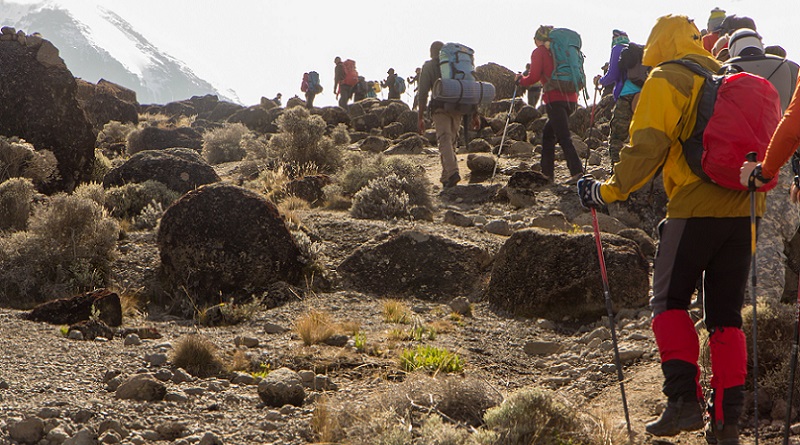
It goes without saying that the tour package you select will also highly influence your budget. As discussed, most travelers book their Kilimanjaro treks through tour operators who (usually) provide all-inclusive deals. These deals generally include hotel fees, food costs, porter and guide costs, and even airport transfers. Of course, the tour package you purchase will also determine your route and duration. As such, finding the right tour package is just as important to your budget as it is to the success of your trip.
We’ve already mentioned that it’s not a good idea to cut corners when selecting your tour package. This generally means you shouldn’t spend anything less than $2,000 (or at the minimum $1,700) when deciding on your trip. That doesn’t mean, however, that you should automatically go with the most expensive option. The truth of the matter is that, just as with any other business, you don’t always get what you pay for when you buy a luxury tour. For this reason, you can save yourself a bit of money and still enjoy a great trip by aiming around the $2,500 mark for a six-to-eight day trek. Of course, this number pertains only to the tour package itself and not your flight or any other Mount Kilimanjaro cost. While this may seem steep to budget travelers, you’ll likely find it the best at optimizing both your experience and your budget.
Equipment
Depending on the quality of your tour package, you’ll be provided some equipment while climbing (including a mess kitchen, tents, and more). Still, there are a number of items you’ll want to bring yourself if you’re after success on the mountain. Consider bringing a sleeping bag good for extreme weather, top-brand hiking boots, layered clothing to keep you warm at extreme altitudes, a duffel bag, headlamp, and any other equipment that helps you hike. Of note, remember that it costs money to bring food up the mountain.
Predicting how much you will spend in equipment costs naturally varies, as you may have some items already yet lack others. Still, you should expect to spend around $700 on this equipment, if not more. It doesn’t hurt to buy new equipment for your trip, even if you already own some of the items on this list. Simply put, Mount Kilimanjaro is a beast to climb, and you’ll need to be ready for it.
Tip Money
Expect to spend a minimum of $300 in tips to your porters once the trip has been completed. This standard practice is an important part of porter income and is also a way of showing your appreciation for a job well done. If you can afford it, it’s best that every member of your party tips separately, though this isn’t a hard and fast rule.
Total Costs
Adding these Mount Kilimanjaro costs together, a quality trip to the mountain will likely take around $5,000. For this reason, you should expect to spend some money if you’re wanting to climb the legendary mountain. Of course, you’ll want to set aside even more if you plan on doing anything else while in the country, particularly for your hotel fees the day you arrive and the day you leave. Understanding how much it takes to embark on a quality Kilimanjaro trip is important to ensuring you reach the summit. Remember: the more money you spend, the more likely it is that you’ll reach the top. Not to say that you should spend a fortune—because you shouldn’t—though you don’t want to rush out for the best budget trip, either.
The Bottom Line
So how much does it cost to climb Mount Kilimanjaro? As shown in this guide, Mount Kilimanjaro costs can vary significantly, though the general rule of thumb is that you shouldn’t go for anything too cheap or too expensive. Still, climbing Mount Kilimanjaro isn’t a cheap endeavor—in fact, it should cost you a bit of money. With that being said, make sure that you have enough money set aside for a quality trip before you commit yourself to the grind of the adventure.
By following in the information in this guide, you can gain a more realistic idea of what it will cost you to get to the top of the mountain, as well as understand the myriad factors that influence the cost of your trip. For this reason, make sure to reference this guide when budgeting for your upcoming trip!



